Soviet anti-submarine defense during the war
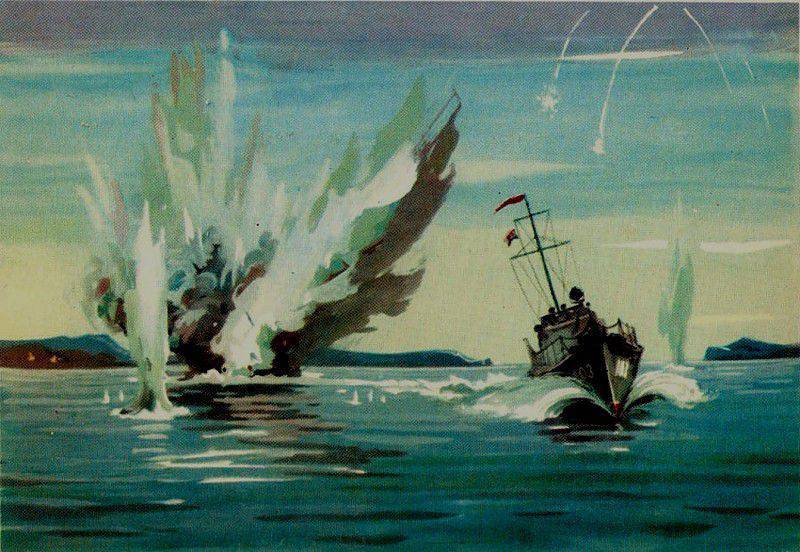
During the Great Patriotic War against our Naval fleet and transport ships, there were more than 150 enemy submarines, of which more than 100 were German in the North, 37 (32 German and 5 Finnish) in the Baltic, 15 (6 German, 6 Italian, 3 Romanian) in the Black Sea. The fight against them was one of the most important tasks of our fleets.
The first thing at the beginning of the war was to create a reliable anti-submarine defense. In accordance with the then existing views, the operational zones of operations of the fleets were divided into areas of naval bases, in which anti-submarine defense was carried by special formations - the protection of water areas (OVR). Outside the bases, enemy ship submarines were to be engaged in combat operations during the execution of operational tasks. The safety of navigation ships provided by the system of convoys.
In the Soviet fleet anti-submarine ships of special construction were small hunters for submarines of the type MO-4. Their displacement did not exceed 56-60 t, while they possessed quite good seaworthiness, high speed (27 nodes), had the necessary armament. Toward the end of the war, new-type anti-submarine ships appeared in the fleets — large submarine-hunters BO-1. Used for anti-submarine warfare and part of the ships mobilized from civilian agencies, and equipped accordingly.
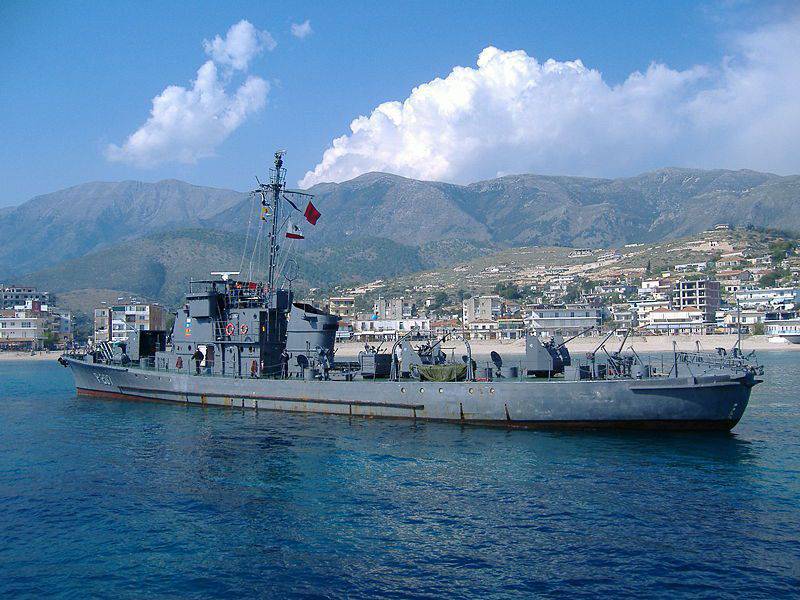
In antisubmarine warfare, an important place was given to the formulation of barriers. In the first months of the war, the Soviet fleets set up anti-submarine mines and network barriers in the bays and on the roads in order to prevent enemy submarines from penetrating there. A system for monitoring submarines was organized: coastal posts, ship patrols, search aircraft, ships and ships during sea crossings.
Thus, by the autumn of 1941, a systemic anti-submarine defense was created in all our fleets. Over the 100 ships and boats, seaplanes and, in addition, various barriers were used to actively combat the enemy submarines.
Thus, the command of the Red Banner Baltic Fleet (KBF) fleet organized the installation of a special anti-submarine mine barrier at the mouth of the Gulf of Finland. At the exit fairways from the Finnish skerries, 10 mine cans were created. In addition, small hunters and torpedo boats delivered 387 mines and 89 mine defenders in the fairways at the exits from Helsinki, Porvo, Borgo, and mine torpedo aviation - 107 bottom mines in the depth of the skerries.
The minefields hampered the actions of German and Finnish submarines, but could not completely eliminate the threat. Therefore, the Red Banner Baltic Fleet embarked on setting up anti-submarine nets and booms for fencing the Luga Bay, where it was planned to organize a maneuverable fleet base. In early August, the Tallinn raid was fenced with nets. Later on, networks were installed in separate communication sections of Tallinn - Kronstadt. They created a “fence”, as it were, covering our maritime posts from the north. In total, 1941 was able to deliver network barriers with a total length of about 38 miles and more than 8 boom miles.
Anti-submarine defense in the Gulf of Finland was complex: position barriers, as well as an active search for submarines with warships and aircraft. In order to reach our communications, Finnish submarines had to pass through the area of mine cans, the observation zone of the observation and communication service posts and the search aircraft. In the southern part of the bay, where the fairways passed, they were to force network barriers, bypass patrol ships and overcome the convoys. Enemy submarines in most cases could not pass through all these obstacles and returned to the skerries without firing a single torpedo.
The battle of the KBF with submarines in 1941 included the defense of base areas, the protection of transports and large warships at the transition, and the active search for submarines at sea. The lack of special anti-submarine forces was partially compensated by various auxiliary ships and aircraft. The use of diverse forces and various methods of struggle fully paid off. In 1941, 740 transports and 1170 warships and boats that delivered 190 thousand people, 8 thousand horses, 670 guns, and 63 passed through sea lanes in convoys without loss. tank, about 8 thousand vehicles, about 29 thousand tons of ammunition and more than 1000 tons of fuel, food and other cargo.
Our submarines were involved in antisubmarine warfare in the course of their combat missions. For example, 10 August U-307, commanded by Lieutenant-Commander N.I. Petrova, returning to the base and emerging under the periscope on Dago Island, found the enemy U-144 submarine on the surface and sank it.
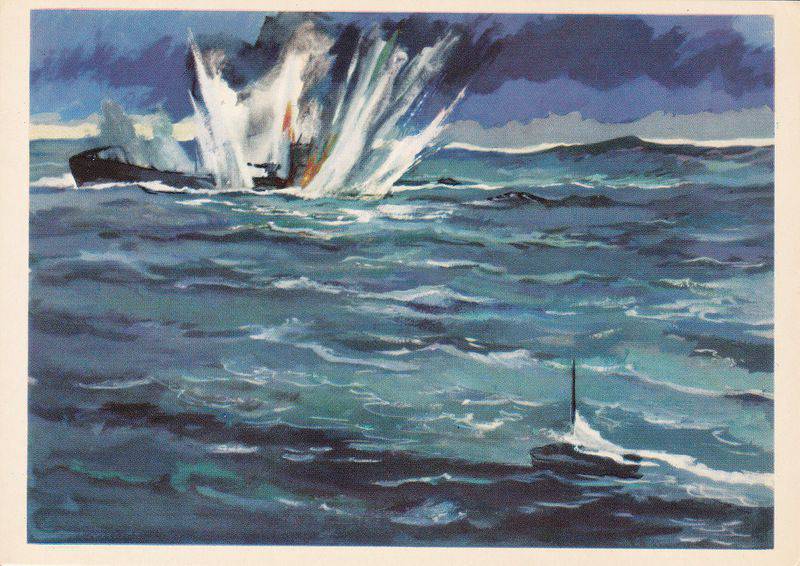
During the summer-autumn campaign of 1941, in none of the maritime theaters, enemy submarines practically did not create a significant obstacle to the movement of convoys. In fairness, it is worth noting that during this period we were opposed by a small number of enemy submarine forces. In the Barents Sea in 1941, 3 operated, and then 6 submarines, in the Baltic Sea - 8 German and 5 Finnish, on the Black Sea - only one Romanian boat "Dolphinul". At the same time, the effectiveness of the anti-submarine forces at that time was still low, due to the low degree of their equipment with technical means and the lack of combat experience.
However, already in 1942, the Nazis in the north of Norway concentrated the main large surface ships, a flotilla of submarines (over 20 units) and the 5 air fleet. They were assigned the task of isolating the USSR, interrupting external sea communications.
On the Baltic Sea, the enemy’s goal was to achieve the free navigation of its vessels by completely blocking our fleet in the eastern part of the Gulf of Finland. To do this, he used his submarines first to the west of the minefield line in the Gogland antisubmarine position system, and then - in the direct guard of the convoys and, finally, most successfully - to independently search for Soviet submarines in places where they were charging batteries. All these tasks performed 10-11 enemy submarines.
On the Black Sea, the main task of the enemy fleets was to take over the supply of ground forces and aviation. And besides, they had to impede the actions of the Soviet fleet and shipping. To this end, in the spring of 1942, the 11-I fleet of Italian submarines was sent to the Black Sea. These were small submarines of the SV type. the submerged displacement of which was 45 t. They had two 450-mm torpedoes, the speed of the 7,5 node in the surface position and the 6,5 node in the underwater position. The crew consisted of five people. The small radius of action (90 miles) limited their use. They needed bases located close to the sea. In May, 6 of such boats were delivered to the Crimea and, based on Yalta, participated in the blockade of Sevastopol.
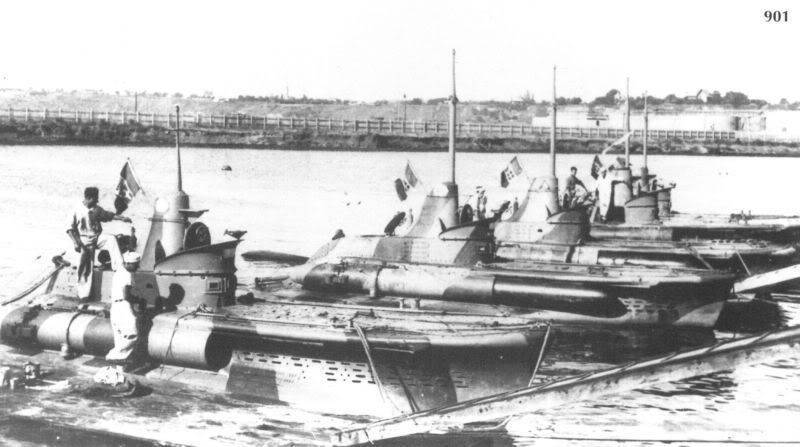
From June 1941 to May 1944 The Nazis sent 89 submarines to Northern Norway (1941 in the year - 13, 1942 - 33, 1943 - 20 and in the first half of the year 1944 - 23). They operated in the waters of Iceland to the island of Dikson and Vilkitsky Strait. From June 1944 to May 1945, 129 submarines arrived in the ports of Norway, of which more than 30 operated in the Arctic.
Thus, in 1942, 38 enemy submarines were already operating against the Soviet Navy. During this period, the Northern Fleet led the most active fight against enemy submarines. And indeed, in the north against the convoys marching into the Soviet Union with military supplies, and in the opposite direction with raw materials, the Germans began to conduct operations in March 1942, which involved aviation, submarines and surface ships. Each operation involved simultaneously 7 to 23 boats.
This required the rapid development of anti-submarine forces and equipment in the Northern Fleet. Before the arrival of the convoy, patrols intensified, control searches of submarines were made on the approaches to the Kola Peninsula, fairways were trod. Aviation bombed German airfields and bases. When the convoy arrived in the zone of the Northern Fleet, destroyers and patrol ships were included in the security of the transports.
Here is one example of the struggle of surface ships with enemy submarines. The destroyer “Grupyaschyy” 30 March 1942, provided security escort PQ-13. In 19 h 15 min between the waves, the cutting of a submarine, which attacked the nearest transport, was noticed. The destroyer immediately rushed to her, dropping 9 large and 8 small depth charges. The attack was frustrated, and the enemy submarine was sunk.
The definite success of the antisubmarine defense is due to the use of all the forces of the Northern Fleet to guard the convoys and displace submarines from certain areas. Carrying out the attacks, the North Seamen dropped a large number of depth charges (from 12 to several dozen), which blocked possible errors in determining the location of the submarine and increased the likelihood of its destruction. However, the discovered boats were still not subjected to prolonged prosecution, since the fleet did not have the necessary anti-submarine forces for this.
In 1943, the task of fighting enemy submarines rose seriously for the Black Sea Fleet, in connection with the deployment of German submarines to the 6 area. German submariners managed to counteract our shipments. So, 31 March 1943, they damaged the torpedo tanker "Kremlin", which, without losing buoyancy, reached Batumi under its own power. July 15 submarine U-24 sank the minesweeper "Defender". Then came the attacks on the motobots and other small objects. In addition, submarines bombarded the train between Tuapse and Sochi. All this required the adoption of urgent measures to strengthen the defense. Anti-submarine forces were increased by transporting boats from the Caspian Sea, Ladoga and the White Sea, as well as the number of reconnaissance aircraft. At the ports and bases were put mine and bonsetovye obstacles.
The measures taken reduced the loss of our ships, and in 1944, the anti-submarine warfare in the Black Sea Fleet took on an offensive character. So, in the summer of 1944, on the approach to Constance and at the mouth of the Danube, aircraft delivered mines. In the middle part of the Black Sea in the path of submarines aircraft conducted a systematic search. In the ports of the Caucasus, and then of the Crimea, search and strike groups of anti-submarine boats were deployed, which pursued every discovered submarine. As a result, losses from submarine strikes did not exceed 2%. total number of vessels passed through communications.
At the beginning of the Yassy-Kishinev operation, the Black Sea Fleet aviation bombed enemy ships in the ports of Constanцаa and Sulin, as a result of which 20 ships were sunk, including the German U-9 submarine. Two boats (U-18 and U-24) were severely damaged and because of a hopeless situation were flooded by crews. The last three fascist submarines (U-19, U-20, U-23) after leaving the war of Romania and Bulgaria were flooded by their crews off the Turkish coast.
In 1944, the fight against submarines was resumed on the Baltic Sea. From June to September, 10-12 German and 5 Finnish submarines attempted to thwart the assistance of the Red Banner Baltic Fleet ground forces in the Vyborg gulf and trawling fairways through the Gogland mine-artillery position in the Gulf of Narva. They fired torpedoes on any ships, including boats, not excluding small hunters. Using acoustic self-guided torpedoes, the enemy sank several combat boats, creating a tense situation in the entire eastern part of the bay.
The intentions and tactics of the enemy became completely clear to the command of the Red Banner Baltic Fleet after the small hunter No. 30 in the Vyborg Gulf in July sank the German U-103 submarine. Six people from her crew, including commander V. Schmidt, rushed out of the torpedo tubes to the surface and were picked up by a small hunter. In September, this boat was raised and brought to Kronstadt. From the compartments extracted codes, instructions, encryption machine. Of great importance was the disclosure of all the data on the newest homing torpedo T-250.
The events in the Vyborg gulf and the attacks of enemy submarines in other areas demanded that the entire anti-submarine defense system be activated, and that aviation should be more widely involved in the fight against submarines. At the exit of the skerries in the Vyborg Bay, minefields were placed. The patrol began to send two boats, which were instructed to be only on the move. If the submarines could be detected by airplanes or other means, the boats were used as a search and strike group, which shortened the time many times from the moment of detection to the beginning of the search. A special 29-I anti-submarine air squadron was formed. In addition, the search for submarines systematically attracted aircraft 15 th separate reconnaissance air regiment and 9 th assault air division.
A rare submarine that went into the sea, was not detected and not attacked by our anti-submarine forces. More than half of the submarines operating on communications were damaged by boats and aircraft. Convinced of the activity of the Soviet anti-submarine forces, the enemy was forced to limit the actions of submarines during the daytime.
From June to September 1944, the anti-submarine forces of the fleet repulsed numerous 15-17 attacks by enemy submarines. The Germans could not prevent the Red Banner Baltic Fleet from supporting the ground forces in the Vyborg offensive operation. They also failed to prevent our ships from trawling in the Gulf of Narva. By the beginning of the Tallinn offensive, the minesweepers made passes through the southern flank of Gogland's fortified position. Boats and ships went to the west, supporting the ground forces.
To constrain the actions of enemy submarines in the western part of the Gulf, the 10 Battalion Minesweeper Battalion deployed on enemy fairways of the 7 minefield lines, total 594 mines. U-1945 and U-676 submarines exploded on these mines in January and February 745.
At the end of 1944, anti-submarine defenses of Stockholm-Leningrad communications across the northern coast of the bay deployed anti-submarine forces. The brigade of the naval ships and the 6 th Red Banner Division of small hunters were relocated to the Aland Islands. Anti-submarine forces were also on Hanko and in the Porkkala Udd region.
By the beginning of 1945, 138 small hunters and patrol boats from 90 were equipped with sonar stations from 9. Sharply increased the number of submarine detections in the submerged position. 1945 January 6, 3 minesweepers in escorting 124 small hunters came from Tallinn to mine in the mouth of the Gulf of Finland. At the junction, MO-679 made hydroacoustic contact with the U-XNUMX submarine, attacked and sank it.
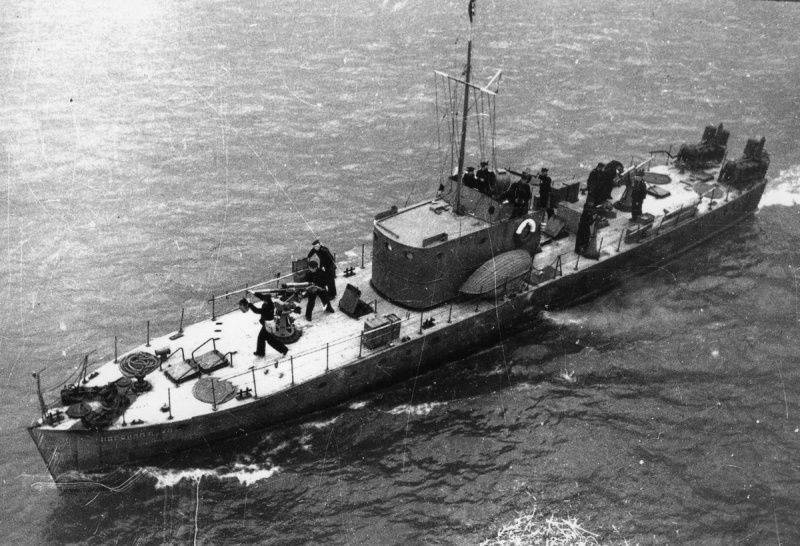
In the middle and southern part of the Baltic Sea, our aircraft and submarines operated against the enemy’s submarine fleet. Thus, in September-November, the fleet air forces inflicted eight bomb-assault strikes on the port of Liepāja, this is about 350 sorties. The main objective was the destruction of vehicles, but several submarines were also damaged. The German fascist command was forced on October 4 to relocate a submarine flotilla from Liepaja to the bay of Danzig. In October-December 1944, our submarines delivered 80 mines in the Kohlberg, Sassnitz, Brewsterort and Fr. Bornholm. At the end of the 1944 of the year, three German U-boats were blown up by mines and sank. All this significantly reduced the effectiveness of enemy submarine forces.
The anti-submarine defense of the Red Banner Baltic Fleet was, however, only aggressive (as described by the German historian J. Meister), but also skillful enough. And above all, adept at massaging anti-submarine forces in crucial areas.
In 1944, the effectiveness of the fight against submarines and the Northern Fleet increased. The following circumstances contributed to this. Soviet aviation in the North held air superiority. The number of ships and aircraft grew rapidly, their technical equipment improved. In 1944, a brigade of patrol ships was formed, followed by a brigade of submarine hunters. For their search 77 aircraft were allocated, which could simultaneously carry 280 anti-submarine bombs. In August of the same year, 9 squadron destroyers arrived in England from the division of the Italian fleet. All this created real opportunities for increasing the effectiveness of the fight against enemy submarines.
Each submarine discovered was attacked and prosecuted. Over the last four months of the war 6300 depth and 250 aerial bombs were dropped on the enemy. Many boats were damaged and 3 sunk.
In general, convoys to the northern ports of the Soviet Union were carried out successfully. So, from 40 convoys that counted just 811 transports, 33 ships returned to bases for various reasons, 58 were sunk, that is, losses were about 8%. From the convoys returning from the USSR, 24 transport was lost — less than 4%. During this time, the Northern Fleet and the Allied Navy sank 38 enemy submarines.
Thus, during the Great Patriotic War, the struggle of surface ships with submarines was continuously improved. If in the first years it was ineffective, which is explained by the lack of ships, their weak technical equipment, then in subsequent years these shortcomings became obsolete. The fleets received new anti-submarine ships and boats with more sophisticated underwater surveillance devices. So, in 1944, on ships and boats of the Black Sea Fleet there were about 100 hydroacoustic stations; By the end of the war, about half of the SFs from 218 ships and anti-submarine defense boats were equipped with sonar equipment.
Aviation not only supplemented the search for surface ships, but also significantly expanded the zone of influence of our forces on enemy boats. In the early years of the war, aircraft that had no technical means of detection were used for visual search. Subsequently, the number of aircraft increased, their technical equipment improved. For example, in the Federation Council, 1941 was used in the interests of PLO in 65, and in 1942 - 124 aircraft. During the war, SF aircraft made search of submarines 7045 of sorties, discovered 73 submarines, making 47 attacks on them. On the Black Sea Fleet in January, 1943 included 27 airplanes as part of PLO aviation, in May 1944 - 75. During the entire war, the Black Sea Fleet aircraft made search for submarines 8669 of sorties.
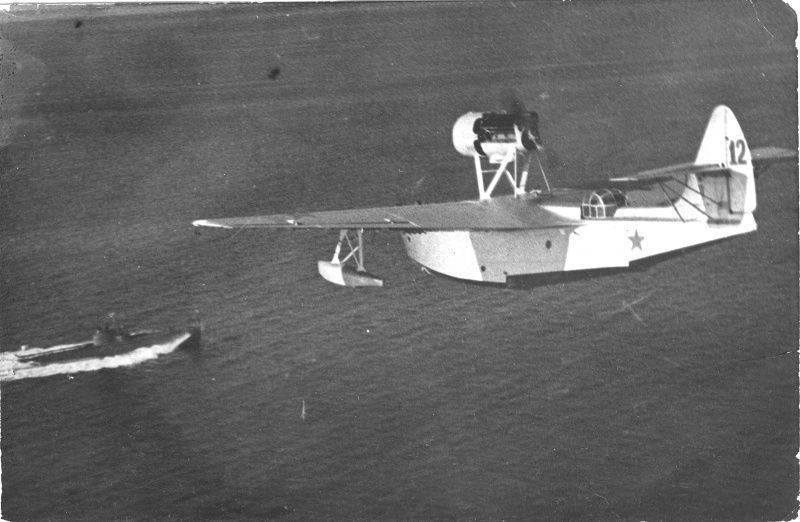
In the course of the struggle with submarines, the most serious problem was finding them in a submerged position. The most important role in this was played by the rapid development of sonar tools. In closed and shallow sea basins, barriers of mines and networks were of great importance, especially if they acquired the character of protected positions.
The fight against enemy submarines, which were the striking force in the maritime theaters until the very end of the war, went beyond the antisubmarine defense as a type of combat support and became one of the main tasks of the fleet. The greatest effect brought the combined use of surface, submarine forces and aviation in the organization of close cooperation between them. The struggle of anti-submarine forces against submarines especially clearly confirmed that its outcome is not decided by a simple numerical superiority, but primarily by more sophisticated technical means of detecting and defeating the enemy, the qualitative superiority of forces and means, the appropriate level of development of naval art. The development of anti-submarine forces in the postwar period went in this direction.
Sources:
Khorkov G. Soviet surface ships in World War II. M .: Military Publishing House, 1981. C.4, 14-18, 71-82, 119-123, 131-135
Makhov S. Secrets of submarine warfare. 1914 — 1945. M .: Veche, 2012, C.316-319, 322-406.
Basov A. Fight against submarines // Militaryhistorical magazine. 1976. No. 7. S. 40-46.
Kuznetsov A. Loss of submarine fleets of opponents of the Soviet Union in the Great Patriotic War // Flotomaster. 2001. No.5. C. 33-41.
Kuznetsov A. Loss of submarine fleets of opponents of the Soviet Union in the Great Patriotic War // Flotomaster. 2001. No.6. C. 28-39.
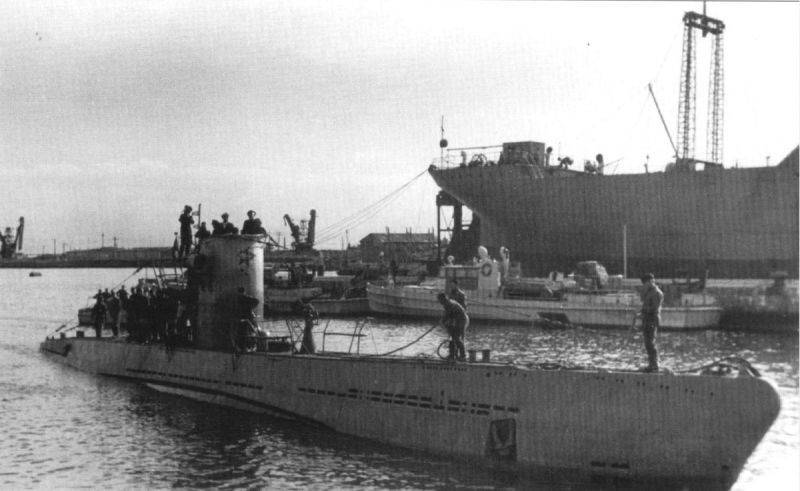
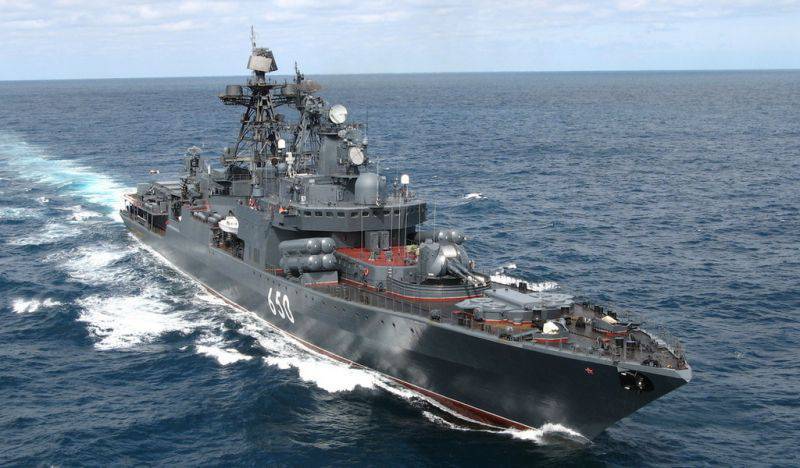
Information